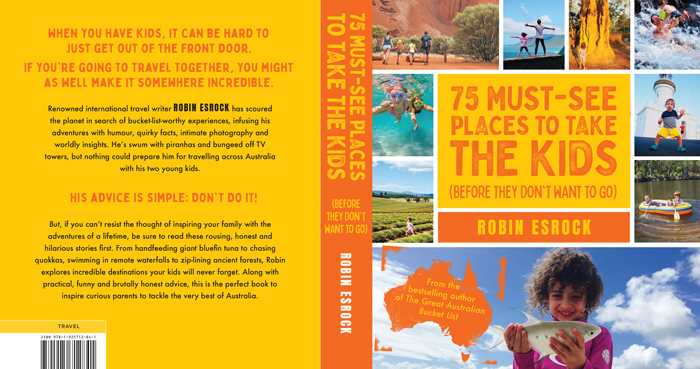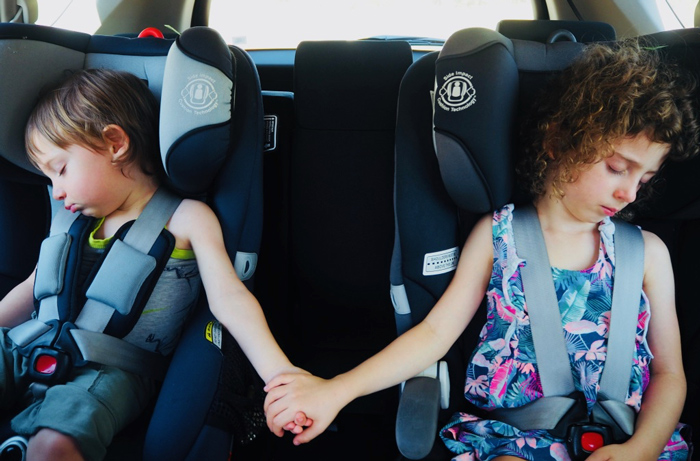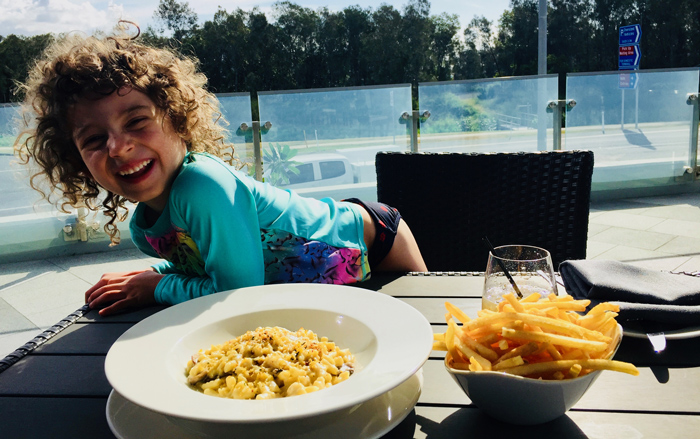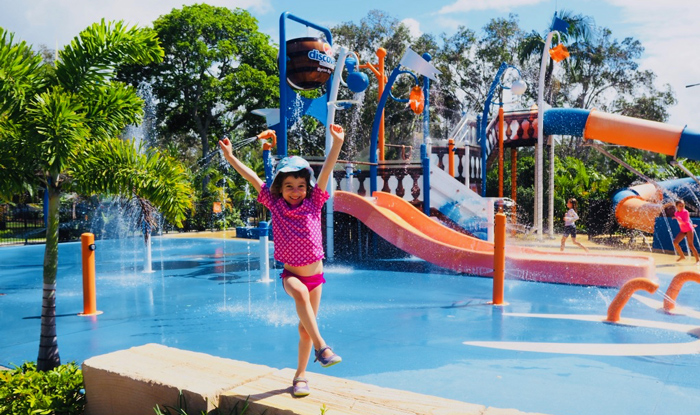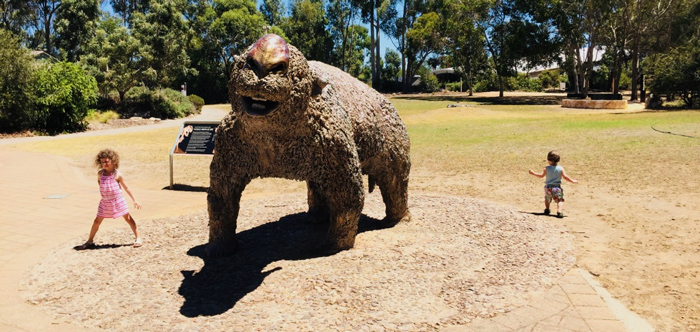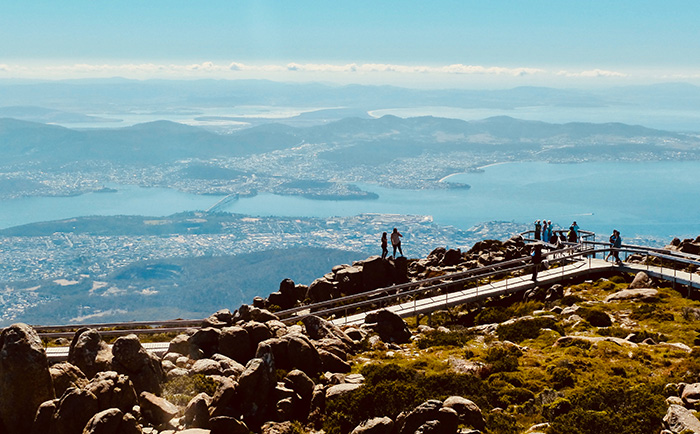
While it’s certainly not the only bicycle experience to tick off in Tasmania, or even on our bucket list, this ride does have a crucial element we can all appreciate: down. Bike rides are great but, unless you’re into pain and muscular glory, they’re even more fun when all you have to do is hang on, apply the brakes and let gravity do the rest. Add spectacular views over one of Australia’s most beautiful cities – or the chance to rip through some local trails – and this bucket list experience all but pedals itself. The peak called kunanyi/Mount Wellington (a dual name that respects the mountain’s Indigenous heritage) towers 1271 metres over Hobart. It features the Jurassic dolerite ‘organ pipe’ cliffs that I’ve seen on mountains in Argentina, South Africa and Antarctica, geological reminders of the days when all three were linked as the Gondwana supercontinent. More importantly for local residents, the imposing mountain creates a rain shadow, allowing Hobart to be the second driest capital in the nation, even though it is located in a rather wet state. Often capped with snow year- round, the summit lookout has significantly lower temperatures than downtown Hobart. You can also expect blustery winds, a sensational view and a dozen people wearing fluorescent vests standing next to mountain bikes. Under Down Under Tours run two to three descents of the mountain every day during summer, providing transfers, bikes, guides and a support vehicle. On the drive up, passing the remains of hard- wood trees destroyed in a huge mountain fire in 1967, our guide points out hazards to watch for.
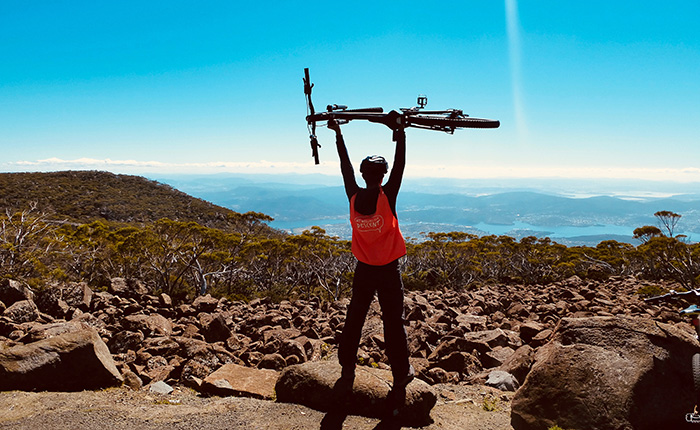
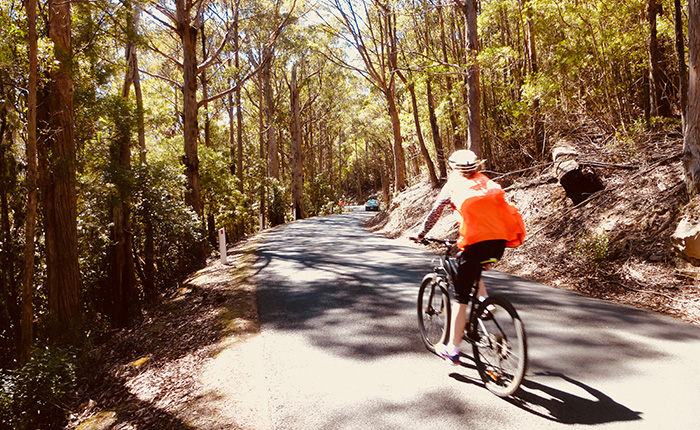
‘We’ll be going down 21 kilometres. Don’t worry, I’ve rarely seen anyone break out in a sweat,’ he says, reassuringly.
Certainly, the weather is cooperating a lot better than my first descent a dozen years ago. I still remember the wind chill blowing through my bones, and the disappointing view of mist from the lookout point. Today I see Greater Hobart and its surrounds in all its glory – the city, hills, islands, ocean and Derwent River. I also see people arriving at the summit having pedalled up by bicycle, which must be spectacular fitness training and/or a horrendous form of physical torture. We hop on our bikes and begin the first descent to a spot where we can regroup, take some photos and adjust our seats for comfort. Two kilometres pass very quickly when you’re rocketing down a steep hill surrounded by alpine forest. We’re advised to keep left as we’re sharing the road with cars, and without lines in the road vehicles tend to gravitate towards the centre. We’re merely cruising down, taking corners as fast as our nerves can handle, with our support vehicle bringing up the rear. At
our next meeting spot, our guide Lainie points out an optical illusion. In the distance below is the gentle arc of the Tasman Bridge linking Hobart to the eastern suburbs. ‘If you stand the Tasman Bridge on its end, it would be taller than Mount Wellington,’ she muses, which seems illogical from way up here, but since the bridge is 1.4 kilometres long, it makes perfect sense.
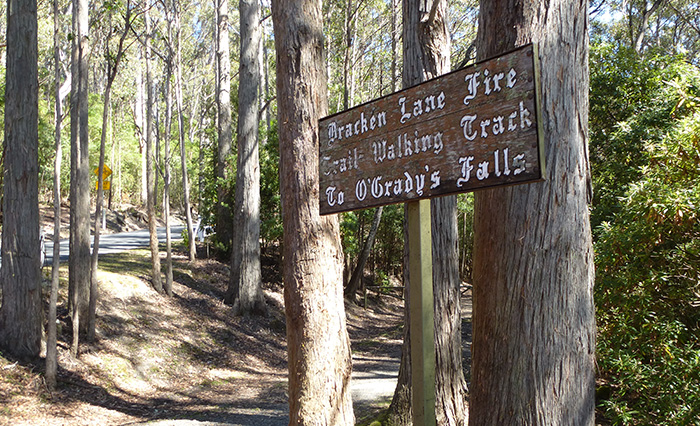
As we continue onwards, the flora changes to reflect the altitude, although I’m too busy looking ahead and smiling with the exhilaration of speed. Bikers can opt for an off-road section next, which everyone in my group agrees would be a fine idea. Although there will be some peddling and tricky navigation over loose gravel, it’s an opportunity to experience the unspoiled natural environment off the paved road. Biking on forest trails, we reconnect with the road and continue into the suburbs that have been cut into the foothills. We stop at the Cascade Brewery to admire the old convict-cut stones, and pedal past the historic Female Factory (where thousands of convict women and children were imprisoned) before joining city traffic. Snaking through various neighbourhoods, we conclude the ride at our departure point on Elizabeth Street. All in, it’s a two-and-a-half-hour round trip, although without the stops to regroup and chat, you could shave much of that time off. As a tour, it’s a fine way to orientate yourself around Hobart, and easily one of the world’s best commercial biking descents. Our short stint in the forest leaves me hungry for more. With its hilly surrounds, fresh air and great views, Tasmania offers some of the best mountain biking in the country.
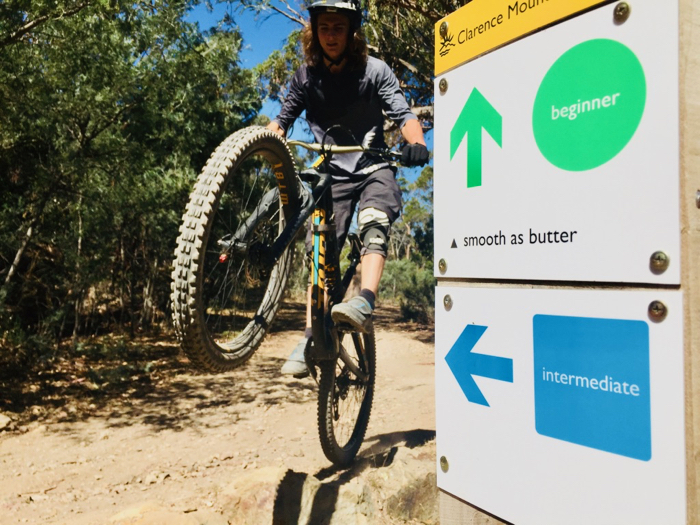
That same afternoon, Harry Nichols – local hero, up-and- coming Enduro World Series competitor and Discovery Parks brand ambassador – agrees to take me into the Meehan Range bike park in Clarence. It’s a popular play- ground of marked trails, tracks and jumps, although this time I have to pedal up to enjoy the down. Harry blitzes on runs named Corkscrew, Cliff Top and Smooth as Butter, and I do an awful job trying to keep up. I do, however, execute a couple of awkward wipeouts.
‘Please don’t do as I do. Just go where I go,’ I tell Harry. Harry tells me about the Maydena Bike Park, the country’s biggest gravity-based bike path, which opened up about ninety minutes outside the city. Tasmania has a welcoming community of mountain bikers, volunteers, bike shops and trail keepers; it’s the kind of destination that belongs on any enthusiastic mountain biker’s bucket list. As for the rest of us, all we have to do is sit in the saddle and start at the top of a mountain.
Click here for more info about the Mount Wellington Descent from The Great Australian Bucket List.

